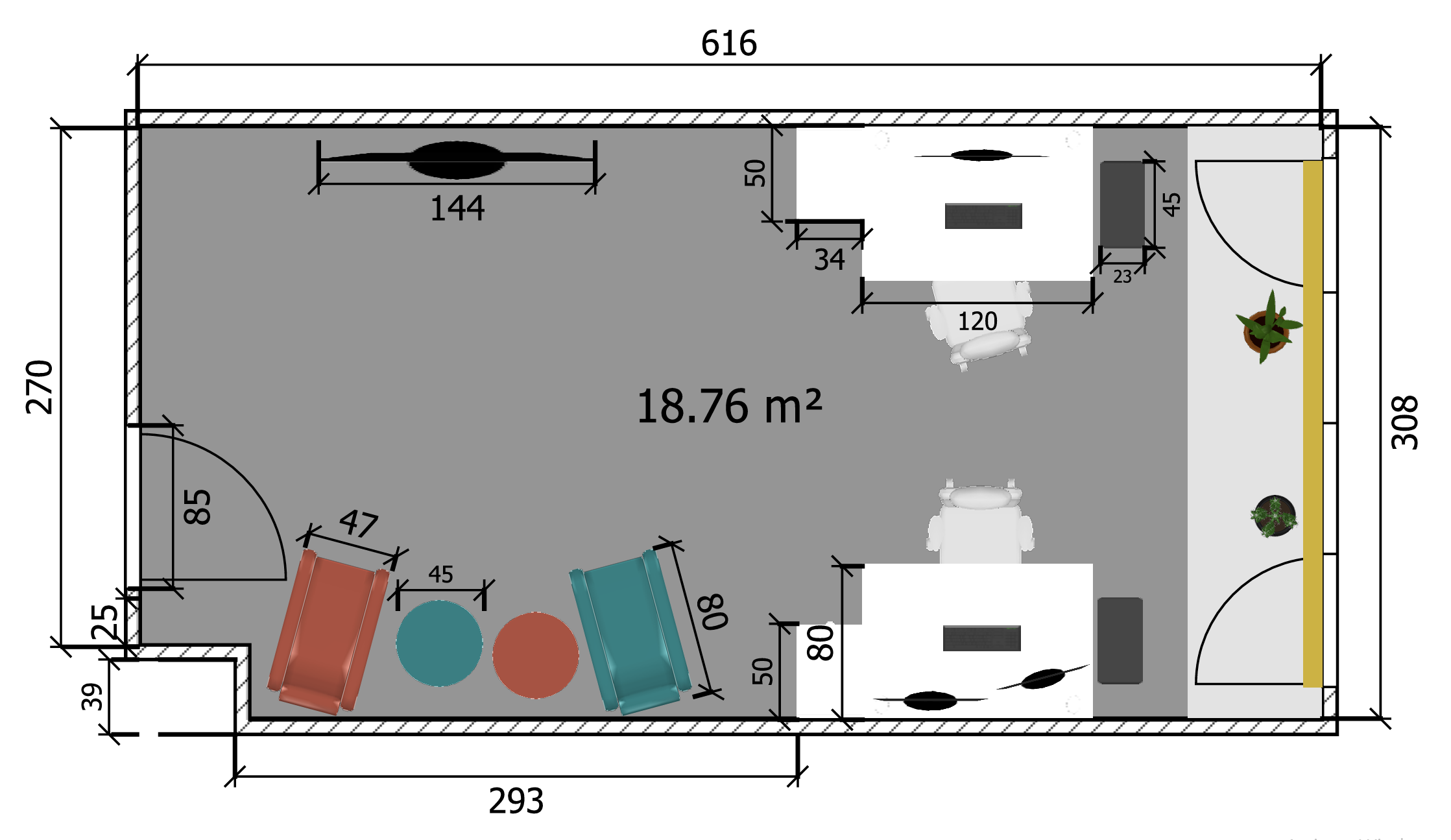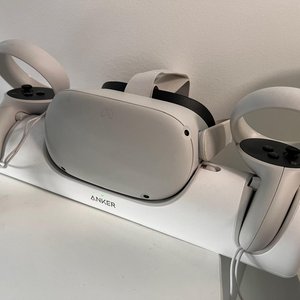XR InnoLab
In the context of the ongoing evolution of the Extended Reality (XR) field, XR InnoLab aims to serve as a resource hub, fostering innovation and bridging academic disciplines, tech companies, educational institutions, and creative minds. Our mission is centered on exploring, testing, developing, and evaluating the capabilities of Virtual Reality (VR), Augmented Reality (AR), and Mixed Reality (MR) to deliver tangible benefits across various social sectors.
The experimentation space has been designed to reflect this vision, featuring an infrastructure optimized for the exploration and leveraging of XR technologies. This lab was chosen for its potential to support a variety of research and development activities. The access area, measuring 3.40m in length and 3.08m in width, is equipped with a large screen on a mobile stand and two armchairs with compact tables, optimizing the use of space for collaboration and reflection. Made of a soft and padded material, these ensure comfort and reduce the risk of injury during immersive experiences."
The access space extends into a larger area that includes two desks, each covering an area of 2.15 square meters, and a bench, with the total room area being 18.76 square meters. The ample space between the door and the desks is essential, providing the necessary freedom of movement for immersive experiences and eliminating potential physical obstacles that could affect research outcomes. Additionally, the design emphasizes accessibility and comfort, ensuring that all participants can use the space under optimal conditions. The zoning clearly delineates spaces dedicated to testing, development, and evaluation, also offering flexibility in reconfiguration according to project needs.

The laboratory is equipped with an advanced support infrastructure, designed to meet the complexity of projects in the Metaverse. This includes three advanced workstations for running complex technological stacks, 4 pairs of XR glasses equipped with haptic sensors, and a multi-GPU server based on the Supermicro SYS-6049GP-TRT system, equipped with 2 Xeon Gold 6230 processors, each having 20 cores and 2 threads per core, totaling 80 threads. The server has 256GB of RAM memory, two NVIDIA GeForce RTX 2080 graphics cards with 11GB GDDR6 each, and one NVIDIA RTX TITAN graphics card with 24GB of memory. Storage capabilities include a 480GB SATA SSD and a 960GB NVMe SSD, along with 40TB of HDD storage in RAID5 configuration. Additionally, the team can monitor user experiences in the Metaverse in real-time through a set of 3 monitors and a television with a 165cm diagonal. Moreover, a wireless mesh system ensures seamless connectivity, and two UPS units provide continuous power supply.
- Facilitating the conduct of various types of research (stakeholder research, best practices research, competition and market research)
- Applying idea management
- Building an innovative culture
- Developing new perspectives, processes, and products to support the testing and learning phases for new technologies
- Creating an experimental model for the Metaverse experimentation framework
- Developing a theoretical model for data governance in the Metaverse
- Developing conceptual models for the use of the Metaverse in education and administration
- Strategies for implementing the Metaverse in education and administration
